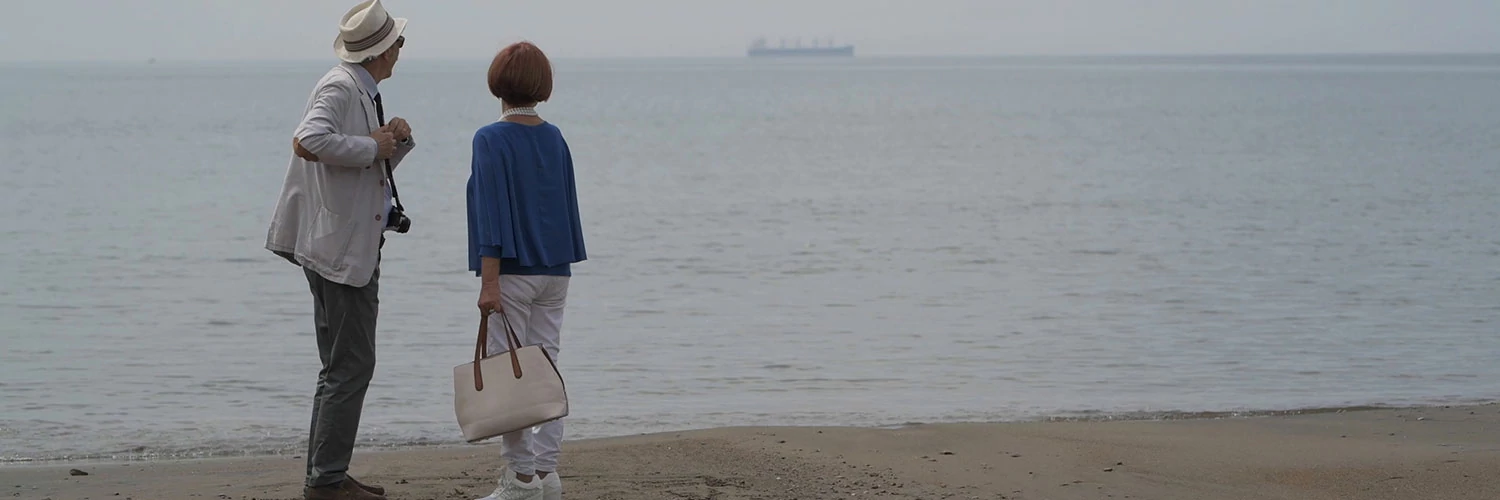Senior tour groups are experiencing a surge in popularity, driven by an aging population with increased disposable income and a desire for enriching travel experiences. This burgeoning market presents unique opportunities and challenges for tour operators, requiring specialized planning and marketing strategies to cater to the specific needs and preferences of this demographic. Understanding the nuances of senior travel, from accessibility requirements to health considerations, is crucial for success in this sector.
This report delves into the key aspects of the senior tour group market, analyzing demographics, popular destinations, marketing techniques, and future trends. We examine various tour types, highlighting the importance of tailoring itineraries to different activity levels and preferences. Crucially, we also address logistical challenges and strategies for ensuring a safe and enjoyable experience for all participants.
Market Analysis of Senior Tour Groups
The senior travel market is experiencing significant growth, driven by increasing life expectancy, improved health among older adults, and a rise in disposable income among this demographic. This burgeoning sector presents lucrative opportunities for tour operators, but also necessitates a keen understanding of the market’s nuances to effectively target and serve this increasingly discerning clientele.
Senior Travel Market Demographics
The senior travel market encompasses individuals aged 55 and above, a group exhibiting diverse travel preferences and needs. A significant portion are “active agers,” prioritizing adventure and exploration, while others seek relaxation and comfort. Health concerns, mobility limitations, and travel companions often influence trip choices. The market is segmented further by income levels, travel styles (independent vs.
group), and technological proficiency. Understanding these demographic variations is crucial for tailoring marketing and tour packages effectively.
Discover the crucial elements that make dc trip planner the top choice.
Top Destinations for Senior Tour Groups
Three destinations consistently rank highly among senior tour groups: Europe, particularly Western Europe, attracts seniors with its rich history, cultural heritage, and well-developed infrastructure; cruises are extremely popular due to their all-inclusive nature, varied itineraries, and convenient accessibility; and National Parks within the United States, offering scenic beauty, moderate activity levels, and readily available amenities. These locations cater to diverse interests, offering a blend of cultural immersion, relaxation, and accessible exploration.
Marketing Strategies of Senior Tour Operators
Senior tour operators employ diverse marketing strategies. Some focus on print advertising in publications targeting older adults, while others leverage digital marketing, including targeted social media campaigns and search engine optimization. Many emphasize personalized service, highlighting accessible travel options, and offering customized itineraries. Others focus on building trust and credibility through testimonials and partnerships with reputable organizations catering to seniors.
A key differentiator is the level of personalization and attention to detail provided in addressing the unique needs and preferences of older travelers.
Price Ranges of Senior Tour Packages
| Destination | Duration (Days) | Price Range (USD) |
|---|---|---|
| European River Cruise | 10 | $3,000 – $8,000 |
| National Parks of the American Southwest | 7 | $2,000 – $5,000 |
| Classic Italy Tour | 14 | $4,500 – $12,000 |
| Alaska Cruise & Tour | 12 | $4,000 – $9,000 |
| Costa Rica Nature Tour | 8 | $3,500 – $7,000 |
Tour Planning and Logistics for Senior Tour Groups
Careful planning and execution are paramount for successful senior tour groups. A well-structured itinerary, coupled with a strong focus on accessibility and safety, can significantly enhance the overall experience and ensure a memorable journey for participants. This section delves into the key logistical considerations for organizing senior tours.
Sample 7-Day Senior Tour Itinerary: Charleston Charm
This itinerary focuses on a 7-day tour of Charleston, South Carolina, catering to the needs and preferences of senior travelers. It balances sightseeing with relaxation and incorporates accessibility considerations.
Day 1: Arrival in Charleston, check-in to a centrally located hotel with elevator access and accessible rooms. Afternoon: Relaxation and orientation session with welcome drinks and a light meal. Evening: Low-key dinner at a restaurant with easy access.
Day 2: Morning: Guided walking tour of Charleston’s historic French Quarter, at a relaxed pace with frequent rest stops. Afternoon: Visit to the Charleston City Market, offering ample opportunities for souvenir shopping. Evening: Dinner cruise on Charleston Harbor, featuring live music and stunning views.
Day 3: Morning: Visit to Drayton Hall Plantation, featuring accessible pathways and informative exhibits. Afternoon: Free time for individual exploration or relaxation. Evening: Dinner at a local restaurant known for its Southern cuisine.
Day 4: Day trip to nearby Boone Hall Plantation, offering accessible features including wheelchair-accessible trams. Enjoy the beautiful grounds and historical exhibits. Evening: Relaxing evening at the hotel.
Day 5: Morning: Visit to the Gibbes Museum of Art, known for its accessible facilities and varied collections. Afternoon: Horse-drawn carriage ride through the historic streets of Charleston. Evening: Farewell dinner at a fine-dining restaurant.
Day 6: Morning: Free time for shopping or exploring areas of personal interest. Afternoon: Optional cooking class focused on Southern cuisine. Evening: Relaxation and final social gathering.
Day 7: Departure from Charleston.
Accessibility and Safety Considerations
Prioritizing accessibility and safety is crucial for senior tour groups. This includes selecting accommodations with accessible rooms, ramps, and elevators; choosing transportation options with easy boarding and sufficient space; and planning activities that cater to varying levels of mobility and fitness. All tour sites should be pre-checked for accessibility, and alternative arrangements should be made if needed. Emergency contact information should be readily available, and first-aid kits should be carried on the tour bus.
Managing Potential Health Concerns
Senior travelers may have pre-existing health conditions. Therefore, thorough pre-trip medical questionnaires are necessary. The tour operator should have a plan for handling medical emergencies, including readily available contact information for local medical services. Pharmacies should be identified along the itinerary. The itinerary should include ample rest time to avoid overexertion.
The tour guide should be trained in basic first aid and CPR.
Challenges and Solutions in Group Travel for Seniors
Effective management of potential challenges is vital for a smooth and enjoyable experience.
The following points highlight potential challenges and their corresponding solutions:
- Challenge: Varying levels of mobility and fitness among participants. Solution: Offer optional activities to cater to different levels of physical capability, ensuring everyone can participate at their own pace.
- Challenge: Potential for medical emergencies. Solution: Have a comprehensive emergency plan in place, including readily available medical assistance and contact information for next of kin.
- Challenge: Maintaining group cohesion and managing individual preferences. Solution: Incorporate both group activities and free time for individual exploration. Regular check-ins with participants can help gauge their comfort and needs.
- Challenge: Managing transportation logistics for large groups. Solution: Utilize comfortable and accessible transportation options, such as motorcoaches with ample space and restrooms.
- Challenge: Communication barriers. Solution: Ensure clear and concise communication throughout the trip. Provide written itineraries and use visual aids where necessary.
Customer Experience and Feedback for Senior Tour Groups

Understanding and responding to the unique needs and preferences of senior travelers is paramount for successful tour operation. Gathering and analyzing customer feedback is crucial for identifying areas of strength and weakness, ultimately leading to improved customer satisfaction and loyalty. This process involves a multi-faceted approach encompassing various data collection methods and analytical techniques.
Gathering and Analyzing Customer Feedback
Effective feedback collection begins pre-trip, with initial inquiries and booking processes providing valuable insights into expectations. Post-trip, multiple channels should be utilized. These include online surveys, email questionnaires, and feedback cards distributed during the tour. Analyzing this data requires careful consideration of both quantitative (e.g., numerical ratings of satisfaction) and qualitative (e.g., written comments and suggestions) information. Sophisticated software can be used to analyze large datasets and identify trends, while manual review of written comments is essential for capturing nuanced feedback.
For example, analyzing the frequency of complaints about the pace of the tour can indicate a need for adjustments to the itinerary. Similarly, positive comments regarding specific tour guides can inform staffing decisions and training programs.
Methods for Improving Customer Satisfaction, Senior tour groups
Improving customer satisfaction necessitates a proactive and responsive approach. Addressing concerns promptly and efficiently is crucial. This includes establishing clear communication channels for addressing complaints and providing timely resolutions. Furthermore, continuously evaluating and refining tour itineraries based on feedback is essential. This might involve adjusting the pace of activities, incorporating more rest periods, or modifying transportation arrangements to better suit the needs of senior travelers.
Proactive measures, such as providing clear and detailed pre-trip information, including detailed itineraries and packing lists, and offering accessible transportation options, contribute significantly to a positive experience. For instance, offering larger print materials and providing assistance with luggage can enhance the overall experience.
Examples of Exceptional Customer Service
Exceptional customer service in senior travel often involves anticipating needs before they are voiced. One example is a tour operator proactively offering assistance with mobility issues, such as providing walking sticks or arranging for wheelchair access. Another example might involve a tour guide demonstrating genuine empathy and patience when dealing with the varying physical and mental capabilities of the group.
A tour company that provides personalized attention, such as remembering individual preferences and dietary restrictions, demonstrates a high level of customer care. A successful example is a company that provides a dedicated contact person available throughout the trip to address any concerns or questions. This personal touch can significantly enhance the overall travel experience for senior travelers.
Senior Tour Feedback Survey
A well-structured survey is essential for collecting valuable feedback. The following bullet points Artikel key areas to address:
Overall Satisfaction
Rate your overall satisfaction with the tour on a scale of 1 to 5 (1 being very dissatisfied, 5 being very satisfied).
Accommodation
Rate the comfort and cleanliness of your accommodation. Provide specific comments on any aspects you particularly liked or disliked.
Transportation
Rate the comfort and convenience of the transportation provided. Comment on any issues encountered (e.g., delays, accessibility).
Tour Guide
Rate the helpfulness, knowledge, and communication skills of your tour guide. Share any specific positive or negative experiences.
Itinerary
Rate the pace and variety of activities. Suggest improvements or changes to the itinerary.
Meals
Rate the quality and variety of meals provided. Specify any dietary restrictions that were or were not accommodated.
Accessibility
Rate the accessibility of the tour for senior travelers. Comment on any areas where improvements could be made.
Open-ended Feedback
Provide any additional comments or suggestions you may have.
The senior travel market offers significant potential for growth, but success hinges on a deep understanding of the target audience and a commitment to providing exceptional service. By focusing on accessibility, safety, and personalized experiences, tour operators can cultivate strong customer relationships and build a thriving business within this increasingly vital segment of the travel industry. Future innovations, leveraging technology to enhance accessibility and personalization, will further shape this dynamic landscape.



